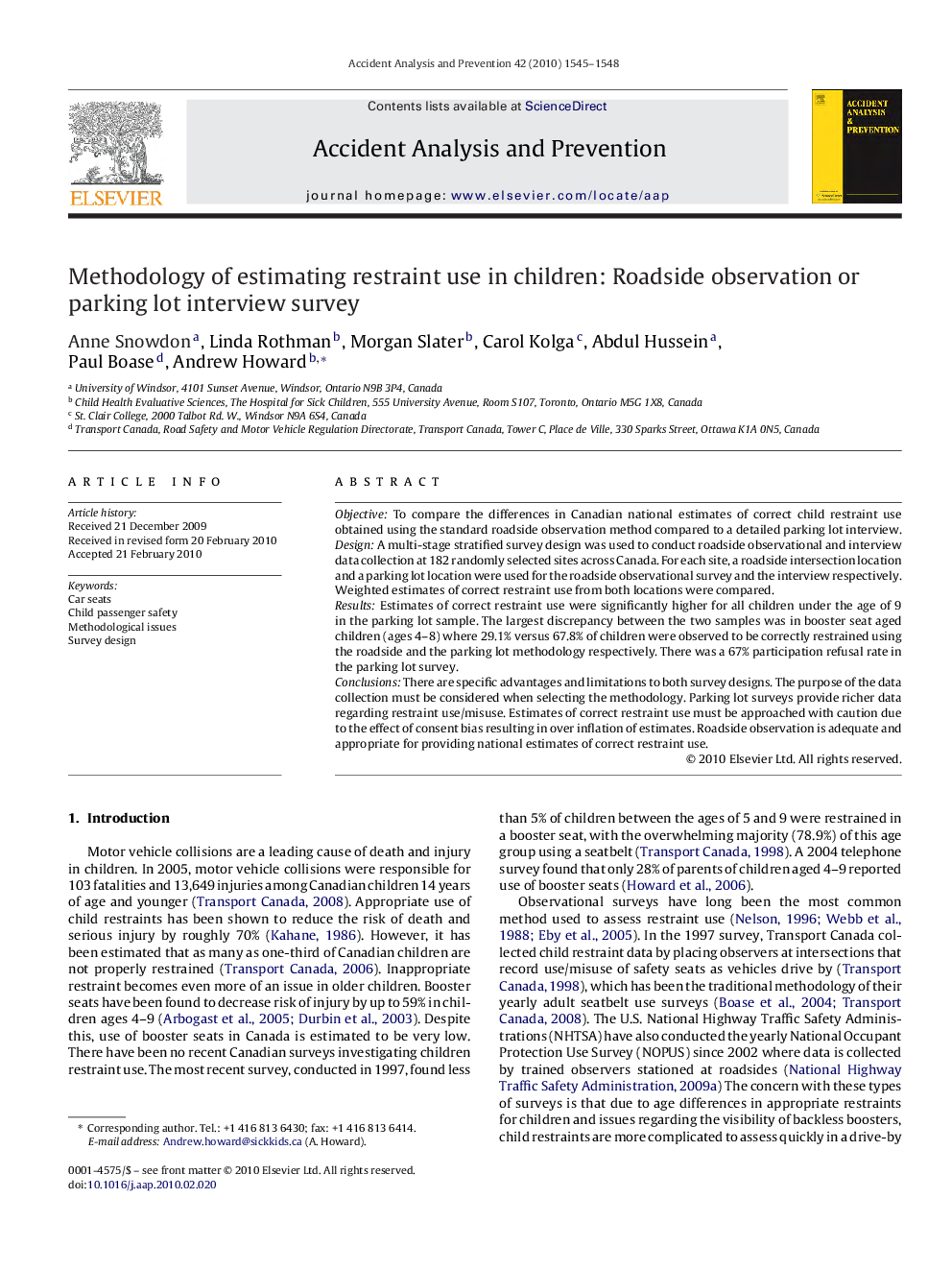| Article ID | Journal | Published Year | Pages | File Type |
|---|---|---|---|---|
| 573127 | Accident Analysis & Prevention | 2010 | 4 Pages |
ObjectiveTo compare the differences in Canadian national estimates of correct child restraint use obtained using the standard roadside observation method compared to a detailed parking lot interview.DesignA multi-stage stratified survey design was used to conduct roadside observational and interview data collection at 182 randomly selected sites across Canada. For each site, a roadside intersection location and a parking lot location were used for the roadside observational survey and the interview respectively. Weighted estimates of correct restraint use from both locations were compared.ResultsEstimates of correct restraint use were significantly higher for all children under the age of 9 in the parking lot sample. The largest discrepancy between the two samples was in booster seat aged children (ages 4–8) where 29.1% versus 67.8% of children were observed to be correctly restrained using the roadside and the parking lot methodology respectively. There was a 67% participation refusal rate in the parking lot survey.ConclusionsThere are specific advantages and limitations to both survey designs. The purpose of the data collection must be considered when selecting the methodology. Parking lot surveys provide richer data regarding restraint use/misuse. Estimates of correct restraint use must be approached with caution due to the effect of consent bias resulting in over inflation of estimates. Roadside observation is adequate and appropriate for providing national estimates of correct restraint use.
